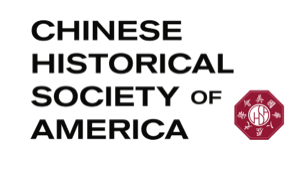
Rare World Class Collection To Become Complete at San Francisco’s Chinese Historical Society of America
Media contact:
David Perry & Associates, Inc. / David Perry / (415) 676-7007 / news@davidperry.com
Rare World Class Collection To Become Complete at
San Francisco’s Chinese Historical Society of America.
Money Being Raised to Purchase Four “Lost” Paintings by Jake Lee
$ 50,000 Needed to Finalize Purchase
https://www.gofundme.com/f/chsa039s-purchase-of-artist-jake-lee-paintings
4 December 2020 – San Francisco, CA: Let’s face it. COVID has been an unprecedented challenge: keeping families apart, keeping museums closed, keeping art from doing what it does best – uniting all of us. In a year exampled by so much separation, however, one “family” is being re-united: an artistic family. For many years thought lost or destroyed, the unique world-class collection of paintings by artist Jake Lee are finally being re-united at San Francisco’s Chinese Historical Society of America (www.chsa.org). However, at a time with so much competition for resources, there’s a $ 50,000 catch. Money must be raised to bring this family back together for posterity. A GoFundMe campaign has been established at https://www.gofundme.com/f/chsa039s-purchase-of-artist-jake-lee-paintings
“Without exaggeration, this is a once in a lifetime opportunity,” says Sue Lee, community historian and former executive director of the Chinese Historical Society. “These twelve paintings represent a rare, celebratory and unique pictorial chronicle of the early Chinese American experience. Eight are currently in our possession, but we’re in a race against time to raise money to purchase the final four and complete the collection.”
Jake Lee (1911–1991) was born in Guangzhou, China and grew up in Monterey, California. Following his studies at San Jose State College and Otis Art Institute, Lee had a prolific career as a commercial artist and an art teacher. In 1959, Johnny Kan, owner of the landmark Kan’s Restaurant in San Francisco’s Chinatown, commissioned a series of twelve paintings by Lee. Each painting showcases specific aspects and milestones in early Chinese American history. These paintings were displayed for many years in the private Gum Shan (“gold mountain”) dining room of Kan’s Restaurant. After Kan’s death in 1972, the restaurant changed hands, and the paintings disappeared in subsequent years. For decades, these paintings were believed to be lost, until eleven of the paintings resurfaced at a 2010 auction in Los Angeles.
“I knew we had to have them,” (Sue) Lee remembers. “We were able to purchase seven at the auction but we were outbid for the remaining four. It’s taken almost ten years, but we convinced the collector to sell his Jake Lee’s to us so they can be re-united at the Chinese Historical Society Museum. We need to raise another $ 50,000 to complete the purchase.”
Having acquired seven of the paintings at auction, Lee was determined to track down the missing twelfth, a painting called “Deadwood.” It’s rediscovery was serendipitous to say the least.
“I got a tip to go to a auto repair shop in Bay view and spotted the painting,” recalls Lee with a nod and laugh. “There it was, hanging at the back of a grease pit. They had no idea of its value. Evidently a former bus boy at Kan’s took the painting and hung it at the back of his family’s garage. He was more than happy to donate it to the Museum.”
Each Jake Lee painting showcases specific aspects and milestones in early Chinese American history, including scenes of San Francisco’s Chinatown, railroad-building in the Sierra Nevadas, Sonoma wine country, cigar and lantern factories, and the 1888 champion Chinese fire-hose team of Deadwood, South Dakota. Besides their un-paralleled historic stature, they are clearly the works of a master craftsman. The large (41 X 31 inches) paintings are striking, boldly composed and brightly colored, packed with elaborate detail and figures in expressive poses engaged in the various cultural and commercial activities of Chinese immigrants of the previous century. In one spectacular scene, New Year’s Day lion dancers roared down a Chinatown street festooned with giant strands of popping firecrackers.
“The watercolors evoke a glittering bygone Chinatown era,” said The New York Times noting that they had served as backdrop to “a storied hot spot frequented by the likes of Frank Sinatra, Cary Grant, Marilyn Monroe and Herb Caen, the longtime newspaper columnist.”
Perhaps Stanford University historian Gordon Chang put it best: “We have few artists in our history who have painted about the history of Chinese-Americans, and Jake Lee really stands out.””
“If we do not tell our own story, no one else will,” says Lee. “This pandemic year has really brought home to all of us the importance of preserving history and living in the moment. This is our moment now, to preserve for future generations and irreplaceable piece of our history.”
About Chinese Historical Society of America:
The Chinese Historical Society of America is the oldest organization in the country dedicated to the interpretation, promotion, and preservation of the social, cultural and political history and contributions of the Chinese in America. CHSA pursues this mission through exhibitions, publications, and educational and public programs in the CHSA Museum and Learning Center, a landmark Julia Morgan-designed building (formerly the Chinatown YWCA) located at 965 Clay Street, San Francisco.